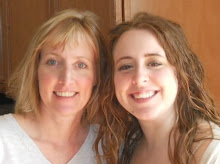Social media plan template
Why write a plan? It’s important to have a written plan or outline that lays out how your use of a specific tactic supports or carries out your strategy that gets you to your overall goal or objective. You also need to be able to evaluate or measure your outcomes to determine whether you met your objectives. A plan can be as informal as an outline or a list of tasks on a calendar – or it can be very specific, detailed and formal – dozens of pages with specific scripts or details. A social media plan would be a subset or an addendum to a larger strategic/integrated communication plan. (PR plans typically are organized into an 8-step plan).
As with every type of PR/advertising/marketing/communication plan, research is important at every step in which you have unknowns. (Who is our audience? What are their social media habits? What are our competitors doing? Is my message being heard and generating the desired outcome?)
Everyone’s social media plan will be different. Base it on your organization and your personality. There is not a one-size-fits-all plan template, but these are the items I believe should be in a social media plan. You may choose to add more depending on your particular organization’s needs and the social media channels you choose. If you need to research something specific on one or more of these specific areas, note that in the plan.
A typical social media plan outline will include:
1. Goal: (why do you want to use social media strategy – how does it fit with your overall organizational goal and why, specifically use social media? Do you want to raise awareness, foster relationships, sell something, raise money, inform/educate, entertain?)
2. Channel: (This is where you name a specific channel, like Facebook. Then you would repeat every part of the rest of the plan (steps 2-9) for every channel that you select. So say you choose Facebook, Twitter, Blog, Youtube and Groupon. From here on down in your plan, you would break out objective, audience, how to drive traffic, frequency, topics, author and evaluation for each of those channels). It would be useful here to describe briefly why you chose each channel, if it’s not evident.
3. Objective: (State in each channel objective specifically, and in a measurable way, what you are attaining with this channel. Measurable means you need a number. Examples: To obtain 5,000 Twitter followers to… or To bring 500 new followers in the first month… or To obtain 25 Youtube videos naming our brand by Sept. 1…) The step of documenting a measurable objective is important because it is the measuring stick for your effectiveness and it gives you something to shoot for. It also helps you remember why you are doing what you’re doing.
4. Audience: (Be specific here, using demographic and psychographic terms. Your audience may depend on your channel/vice versa. It’s likely your audiences may be slightly different for each channel. Or, if you’re specifically targeting a niche audience, be sure your social media communication is communicating with this niche audience.) Example: New and loyal customers age 15-35 who are interested in healthy lifestyles
5. How to obtain audience/drive traffic to channel: (How will your audience(s) know you are on these channels? How will you get them to notice you there?) Example: All advertising promotions will prominently feature social media icons; solicit e-mail addresses via XYX; use RSS, e-mail newsletter… You may want to consider creating incentives to drive your audience(s) to the channel – a contest, coupon, publicity, etc.
6. Frequency: (How often will you Tweet? Post to facebook? Post new videos?) Example: Twitter updates at 8 a.m., 10 a.m., 11 a.m., 2 p.m., 5 p.m., 8 p.m.
7. Topics/themes: (What, specifically, are you posting/sharing, and why? Give some ideas of typical posts. Is it your news headlines of the day? Events? Promotions like daily specials or discounts? Customer photos, funny comments from the staff? Are you educating about your product or service? Remember WIIFM – what’s in it for me – and what your audience would find engaging, useful, or whatever meets your objective.)
8. Author: (Who, specifically, is going to do this posting or content development? Is it you? Interns? The CEO? Your advertising agency? Volunteers?) The who is really important – a lot of plans get developed without considering who is going to do this work and if they have the time. Look at your frequency. Is this practical? Do you need to train people or take into account personalities? Address this briefly in your plan if you think it is an issue.
9. Evaluation/monitoring: (While using the specific channels, you will need to take the time for responding to posts/questions and other feedback. Who is going to do the response-backs? This will require consistent monitoring. You also will need to occasionally evaluate where you are with your numbers. Are you getting the number of followers/fans/likes/posts that you want, based on your objectives (step 3) Track return on specials, track retweets, monitor mentions, follows, visitors.
The plan, ultimately, demonstrates to your organization how best uses of social media build the brand, helps you reach organizational goals, and shows the CEO/boss what you’re doing, creates, buy-in, and creates opportunities for integration with other communication tactics. The plan is a MUST.
Changes are good!
14 years ago
